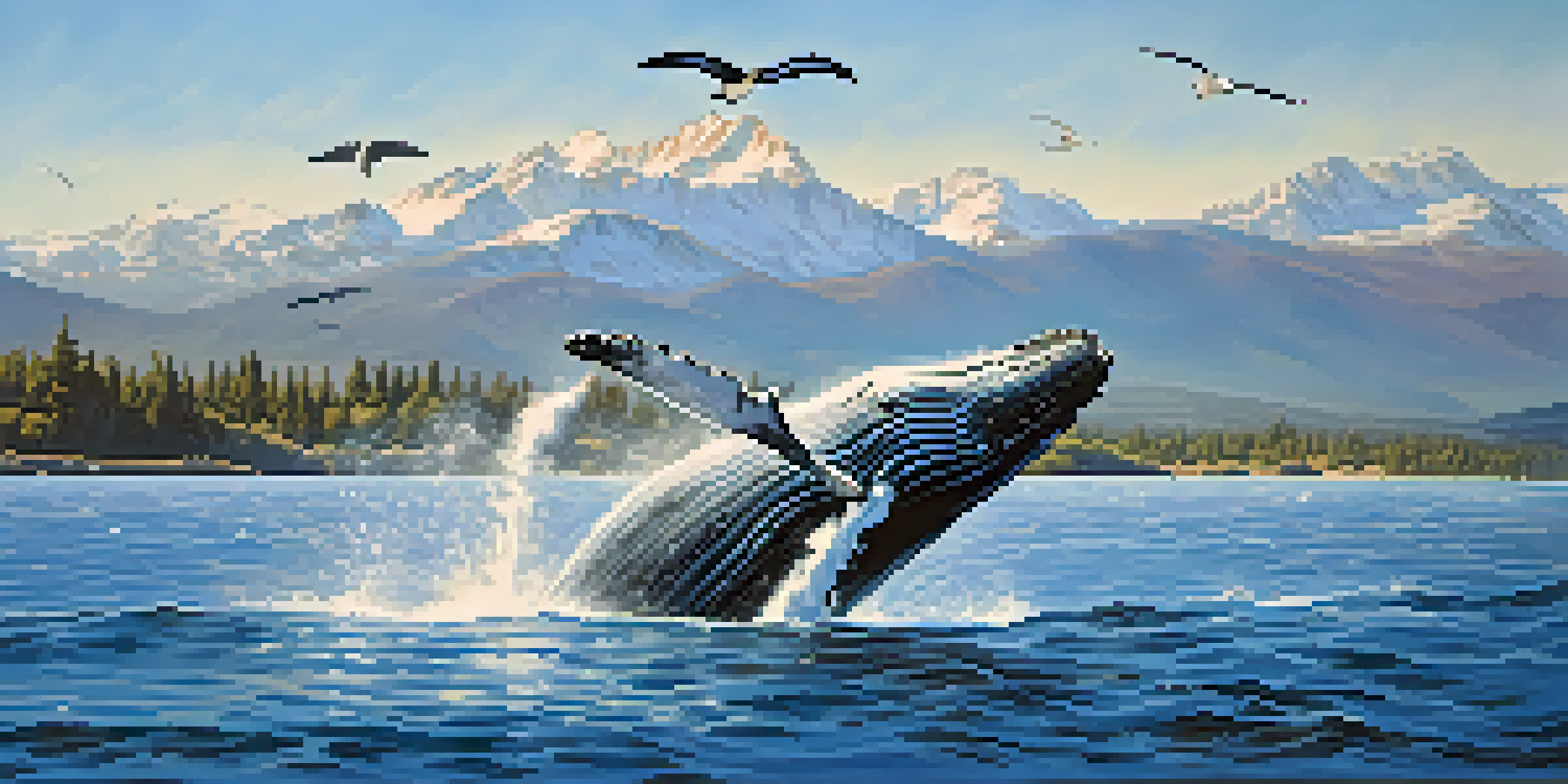The Best Time of Year for Whale Watching Excursions

Understanding Whale Migration Patterns
Whale watching is an exciting adventure, but knowing when to go can make all the difference. Whales migrate based on food availability and breeding seasons, so understanding these patterns is key. For instance, humpback whales typically migrate from colder waters to warmer breeding grounds during specific times of the year.
The sea, once it casts its spell, holds one in its net of wonder forever.
In the Northern Hemisphere, many whale species can be spotted from late spring to early fall. This is when they travel to feed and raise their calves. Observing these majestic creatures during their migration can be a breathtaking experience, with various species making appearances along the way.
So, if you're planning a whale watching excursion, it's essential to research the types of whales you want to see and their migration schedules. This way, you can align your trip with the best chances of spotting them in action.
Best Seasons for Whale Watching
The best time of year for whale watching can vary greatly depending on your location. For instance, in California, the prime time to see gray whales is from December to April during their migration south. Meanwhile, orcas are often spotted in the Pacific Northwest during the summer months, particularly from May to September.

In the Atlantic, the best time to spot humpback whales is typically from March to October. Each location has its peak season, so it’s crucial to plan your trip accordingly. The thrill of witnessing these magnificent creatures leap and breach the water is unforgettable, making the timing of your visit essential.
Whale Migration is Key for Sightings
Understanding whale migration patterns is crucial for planning your trip and maximizing your chances of spotting these magnificent creatures.
Moreover, visiting during off-peak seasons can sometimes yield fewer crowds while still offering excellent viewing opportunities. This means you can enjoy a more intimate experience with nature, which can be just as rewarding.
Regional Variations in Whale Watching Seasons
Different regions around the world offer unique whale watching experiences, and the timing can vary. For instance, in Alaska, the whale watching season generally runs from May to September, when humpback whales feast on abundant fish. In contrast, the Azores in Portugal sees its peak season from April to October, attracting various species, including blue whales and sperm whales.
The ocean stirs the heart, inspires the imagination, and brings eternal joy to the soul.
In Australia, the best time to see migrating humpback whales is from June to November along the eastern coast. Each region boasts its own specialties, and knowing when to visit can enhance your chances of spotting specific species. Whether you're in the tropics or the icy waters of the Arctic, there’s a right time for every location.
Understanding these regional variations is essential for planning your trip. It not only helps you choose the best time to visit but also informs you of the local ecosystem and the whales you might encounter.
Weather Considerations for Whale Watching
Weather plays a significant role in the whale watching experience. Generally, clear skies and calm waters provide the best conditions for spotting whales. Early morning excursions are often favored, as the water tends to be calmer and wildlife more active.
However, different regions experience various weather patterns, which can affect visibility and comfort. For example, winter months may offer unique sightings but can come with harsher weather conditions, making excursions more challenging. It’s always wise to check local forecasts before heading out.
Timing Varies by Region
The best seasons for whale watching differ across locations, making it essential to research your specific destination's peak viewing times.
Plus, consider dressing in layers and preparing for sudden weather changes, especially in coastal areas. Being prepared allows you to focus on the excitement of whale watching rather than worrying about the elements.
Choosing the Right Tour Operator
Selecting a reputable tour operator is crucial for a successful whale watching experience. Look for operators that prioritize conservation and have knowledgeable guides who can provide insight into the whales' behaviors and habitats. A passionate guide can enhance your experience by sharing fascinating stories and facts.
Additionally, check reviews and ratings from previous travelers to gauge the quality of service provided. Many operators also offer eco-friendly excursions, ensuring that your whale watching adventure is sustainable and respectful of marine life.
Finally, consider the size of the boat and the number of passengers. Smaller groups can lead to a more personalized experience, allowing for better viewing opportunities and a chance to connect with fellow whale enthusiasts.
What Gear to Bring for Whale Watching
Preparing for a whale watching trip involves more than just knowing when to go; having the right gear is equally important. Binoculars are a must, allowing you to spot whales from a distance and enhance your viewing experience. Many enthusiasts also recommend bringing a camera with a zoom lens to capture those unforgettable moments.
In addition to binoculars and cameras, dress appropriately for the weather and sea conditions. A windbreaker, hat, and sunscreen are often essential, even on sunny days, as the ocean breeze can be chilly. Comfortable shoes and a light backpack can also make your trip more enjoyable.
Be Prepared with the Right Gear
Bringing the appropriate gear, such as binoculars and weather-appropriate clothing, enhances your whale watching experience and keeps you comfortable.
Don’t forget to bring snacks and water to stay energized throughout your adventure. Whale watching can be an all-day excursion, and having refreshments on hand can keep your spirits high while you wait for that perfect sighting.
The Joy of Whale Watching Experiences
Whale watching is more than just a pastime; it’s a way to connect with nature and appreciate the beauty of marine life. The thrill of seeing a whale breach the surface or a mother and calf swimming together can be a life-changing experience. Many people leave these excursions with a deeper understanding of ocean conservation and a desire to protect these magnificent creatures.
Stories and shared experiences often create lasting bonds among those who embark on whale watching trips together. Whether you’re with family, friends, or fellow nature lovers, the excitement of spotting whales can foster a sense of community and shared wonder.

Ultimately, the best time for whale watching is not just about the season but also about the memories you create. Each excursion offers a unique encounter with nature, making it an adventure worth pursuing year after year.